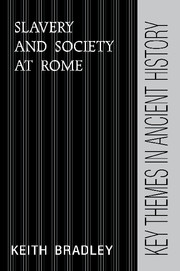Book contents
3 - The Roman slave supply
Published online by Cambridge University Press: 05 August 2014
Summary
When seeking an example of a lowly category of men whose failure to recognise and greet him the philosopher should bear with equanimity, the younger Seneca thought naturally (de Constantia 13.4) of the slavedealers who plied their trade near the Temple of Castor in the Roman Forum. The choice was appropriate enough, for as in later history slavedealers were notorious in antiquity for their sharp business practices and unscrupulous devotion to profiteering.
But what especially catches the attention in Seneca's observation is the reference to a particular spot in the heart of the city that was known as the place for slaveowners to go when they wished to buy new slaves. It was not the only spot where slaves were available: if for example buyers had something exotic in mind the upscale shops of the Saepta Julia were the place to look. But the shops of the dealers in the Forum teemed with slaves – slaves of the meanest sort, the pessimi, Seneca called them – and his readers were clearly expected to be familiar with the fact. Men of Seneca's station of course would not always have had the time or inclination to scout the market themselves. Advice from friends acting as agents would then come into play. But where did the merchandise itself come from when slaveowners were ready to buy?
- Type
- Chapter
- Information
- Slavery and Society at Rome , pp. 31 - 56Publisher: Cambridge University PressPrint publication year: 1994

